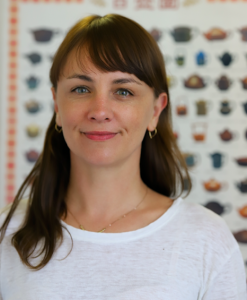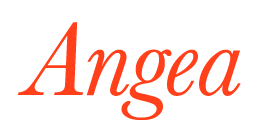At Angea we want to empower women to live their healthiest and most fulfilled life and since October is Breast Cancer Awareness month in Australia, it’s time to talk boobies ladies. Breast cancer remains the second most common cancer among Australian women. So it is important that we talk about breast health and continue to spread awareness of this disease. Learning how to monitor the health of our own breasts is crucial, so that we can detect any suspect signs and symptoms and see our doctor at the earliest sign that something may be wrong. Ladies, take your breast health seriously.
According to the Victorian Cancer Registry Sept 2018, the mean 5-year survival rate across all ages and stages is 91%. If we break this into stages at diagnosis, it is clear that catching this disease early is key, with a 100% survival rate with stage 1, 95% with stage 2 and 78% with stage 3. If the cancer is stage 4 at diagnosis the survival rate is 28%.
There is also a sharp rise in the number of diagnoses in 2016 as women age. Only 5 cases under 25 years of age, rising throughout the late 20’s and 30’s to 135 cases in the age group 35-39. At age 40-44 the number of cases was 283, then at age 45-49 it had risen to 429 cases. The number of cases was over 500 for the next two decades of women in their 50’s and 60’s, with a slight drop in women in their 70’s and remaining at over 200 in women over 80. Men are also affected by breast cancer but in much lower numbers.
Regardless of our age though, we don’t want to miss the early signs so we need to understand how to detect abnormalities so that we can see our doctor at the earliest sign or symptom of a problem.
According to the Cancer Council website (link below), some people do not have symptoms and the cancer is detected through a physical examination by their doctor, or during a mammogram screening.
However if they do have symptoms, they could include:
- new lumps or thickening in the breast or under the arm
- nipple sores
- nipple discharge or turning in
- changes in the size or shape of the breast
- skin of the breast dimpling
- rash or red swollen breasts.
Pain is rare.
Free mammograms are available for women over 40, however only those ages 50-74 are invited to access these every two years. So if you are over 40 but not aged 50-74, you need to be proactive in having a mammogram by asking your doctor or by contacting BreastScreen Australiaon 13 20 50. If you are under 40, a mammogram is not recommended only because it is less reliable in detecting cancer due to tissue density, not because you are not at risk.
Breast self-examination as a screening tool has come under debate as to it’s efficacy in reducing overall mortality rates, with concerns raised over the harm caused by unnecessary biopsies. However it is still believed to be a useful tool in detecting some breast cancer as part of an overall breast cancer screening strategy. Exemining your breasts a few days after the end of your menstrual bleed each month and making it routine is a great way of getting familiar with your breasts and detecting any changes. Or if you aren’t having periods, choose an easy to remember date, such as the first day of the month.
According to breastcancer.org, the upper, outer area — near your armpit — tends to have the most prominent lumps and bumps. The lower half of your breast can feel like a sandy or pebbly beach. The area under the nipple can feel like a collection of large grains. Another part might feel like a lumpy bowl of porridge. Recording these findings helps you to remember and gives you something to check against should you suspect a change later on.
Most lumps turn out to be benign, so don’t panic if you find a lump. Some lumps come and go with the cycle and are hormonally related. In our clinic, we find these to be associated with different Chinese medicine patterns. We always treat the persons so prescriptions of herbs and acupuncture are determined on a case by case basis. But if you are unsure, ask your doctor. Your doctor can teach you how to do breast self-examination. Here is a link to the breastcancer.org page on Breast self-exam.
https://www.breastcancer.org/symptoms/testing/types/self_exam
Overall, the best approach is to know your own body, to act when you feel something is wrong and not be afraid to ask for help. Not all screening methods are able to detect 100% of breast cancers, so if you feel a lump that your mammogram didn’t detect, see your doctor right away. If you are over 40, remember you have free access to mammograms, although you like won’t be encouraged to have one until you are age 50-74. Only 5% of breast cancers have a family link, but if someone in your family has breast cancer, speak to your doctor about your risks.
We want all women to be proactive about their health. Get to know your breasts. Give your boobs a feel. Make friends with your titties. Form the habit and encourage the ladies in your life to do the same.
I have listed some great sources of information below. If you would like to talk to us in clinic about what we can do about non-cancerous breast lumps, please give us a call and take advantage of a free 15-minute hone consultation.
Where can I get reliable information?
Cancer Council 13 11 20
Information and support for you and your family for the cost of a local call anywhere in Australia.
Cancer Council Australia website
https://www.cancer.org.au/about-cancer/types-of-cancer/breast-cancer
BreastScreen Australia13 20 50
www.cancerscreening.gov.au
Cancer Australia
www.canceraustralia.gov.au
 Written by Kim Riley who is a registered doctor of Chinese Herbal Medicine and Acupuncture and has been practicing for over six years. Kim brings a wealth of knowledge and experience in women’s health, fertility, ivf, postnatal, pregnancy, teenage hormonal issues, gut health, the 4th trimester, Endometriosis, menopause, PCOS, nutrition and Chinese herbal medicine. She has a background in working in the health foods industry and initially studied naturopathy before changing paths to Chinese Medicine. This background serves her well in her work as she integrates her knowledge of whole foods, nutrition and supplements with her Chinese Medicine understanding.
Written by Kim Riley who is a registered doctor of Chinese Herbal Medicine and Acupuncture and has been practicing for over six years. Kim brings a wealth of knowledge and experience in women’s health, fertility, ivf, postnatal, pregnancy, teenage hormonal issues, gut health, the 4th trimester, Endometriosis, menopause, PCOS, nutrition and Chinese herbal medicine. She has a background in working in the health foods industry and initially studied naturopathy before changing paths to Chinese Medicine. This background serves her well in her work as she integrates her knowledge of whole foods, nutrition and supplements with her Chinese Medicine understanding.

